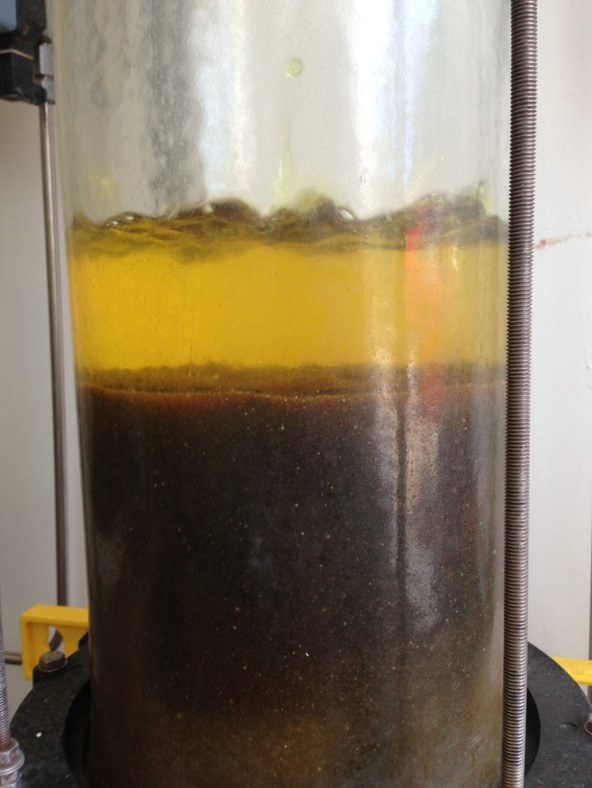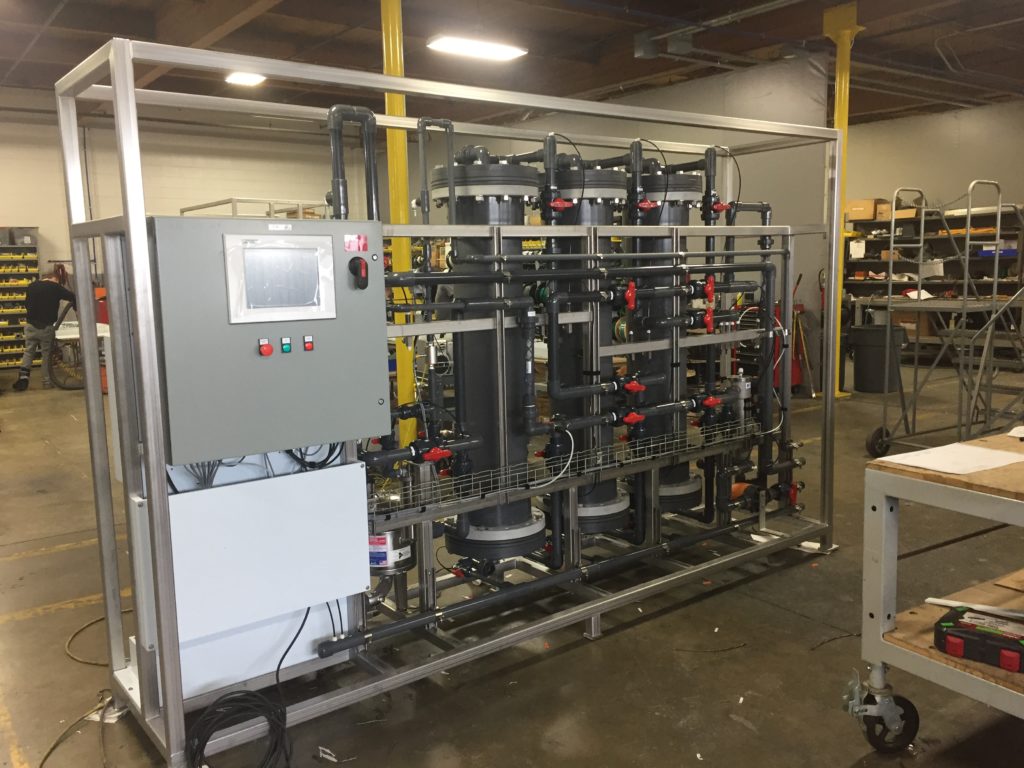
Hexavalent Chromium Treatment
We are ready to help California drinking water utilities prepare for the proposed Hexavalent Chromium MCL
Background
California’s State Water Resources Control Board (SWRCB) recently proposed a draft maximum contaminant level (MCL) for hexavalent chromium (chromium-6) in drinking water at 10 µg/L. The chromium-6 MCL has a long history in California and is expected to impact many drinking water utilities.
Chromium-6 is a common, naturally occurring groundwater contaminant, although sometimes it can originate from industrial pollution. Famously, the movie Erin Brockovich (1996) captured the dramatic litigation surrounding chromium-6 contaminated groundwater in Hinkley, California. It is referred to by many names, including chrome-6, chromium (hexavalent), hex chrome, and Cr(VI). In addition to the hexavalent form, chromium commonly exists in the trivalent state, or chromium-3. This trivalent state is less toxic and exists naturally in the human body. In fact, chromium-3 may be purchased as a health supplement at many grocery stores. Internationally, drinking water limits for total chromium range from 50 to 100 μg/L. These values are based on how toxic total chromium is to animals’ intestines since there is little data on chromium’s toxicity when ingested by humans (Moffat et al., 2018). To reduce chromium exposure, the United States Environmental Protection Agency (USEPA) has regulated total chromium at an MCL of 100 µg/L in drinking water. However, this is based on chromium inhalation exposure, rather than ingestion. This total chromium MCL includes all forms of chromium, which primarily consists of chromium-6 and chromium-3.
California put in place an MCL for total chromium at 50 µg/L, which is lower than the federal MCL. The state has taken this total chromium regulation a step further to specifically regulate chromium-6 at a much lower concentration. In 2014, the California SWRCB established a chromium-6 MCL of 10 µg/L. However, California was sued over this regulation in 2017 and the Superior Court of Sacramento County ruled that the state “did not adequately document why the MCL was economically feasible.” Economic feasibility evaluates how costly chromium-6 treatment technologies are and whether the price tag is within a water utility’s budget. Fast forward to March 2022, the SWRCB issued a Hexavalent Chromium MCL Administrative Draft containing a proposed MCL of 10 µg/L and more supporting documentation for the economic feasibility of implementing this regulation.




Treatment
Chromium-6 can be removed from water in a few, well-established ways. Since the initial MCL release, treatment technologies have significantly improved in efficiency and reliability. Current technologies include:
- Strong-Base Anion Exchange (SBA): Chromium-6, present as the divalent anion chromate (CrO42-), undergoes ion exchange with existing resin anions, typically chloride (Cl–), because of the resin’s higher affinity for chromate. Once the SBA resin’s capacity is exhausted for chromate, it is regenerated using high concentration salt solutions, typically sodium chloride (NaCl), to restore the ion exchange capacity for chromate. Therefore, a brine with high concentrations of chromate and other dissolved constituents is generated and must be processed separately. Alternatively, SBA can be implemented in ‘single use’ mode where the resin is removed and disposed of after the chromium-6 capacity is consumed.
- Weak-Base Anion Exchange (WBA): Conceptually, WBA would operate in a lead/lag configuration. Prior to treatment, pH would need to be adjusted to low levels with hydrochloric acid to functionalize the resin and facilitate chromium-6 removal. Resin in the lead vessel would run until exhaustion at which point it would be replaced and disposed of as a California Hazardous Waste. Following treatment, the finished water pH is again adjusted, this time with caustic soda to return the pH to acceptable levels for the distribution system. Often the ongoing cost associated with pH adjustment deems this process as cost prohibitive.
- Reduction-Coagulation-Filtration (RCF): Ferrous iron [Fe(II)] or stannous tin [Sn(II)] are used to reduce hexavalent chromium-6, again present as the divalent anion chromate, to chromium-3, typically as chromium hydroxide [Cr(OH)3]. Chromium hydroxide is then typically filterable using granular media or membrane filtration. Formation of ferric iron [Fe(III)] or stannic tin [Sn(IV)] also aids in the filtration and adsorption of chromium hydroxide. Therefore, filter or membrane backwash water is generated and must be processed separately.
- Reverse Osmosis (RO): Highly pressurized water is forced through a reverse osmosis membrane, separating chromate from water through electrostatic repulsion and size exclusion. Therefore, a brine with high concentrations of chromate and other dissolved constituents is generated and must be processed separately.
How We Are Helping Utilities with Chromium-6 Treatment
Our team has been working on treatment solutions for chromium-6 since for years, making us the team with the experience and knowledge to help utilities that will need to install treatment to comply with the new MCL. As with all our other projects, Corona chooses treatment tailored to the client’s specific situation. Though all available treatment options will work for chromium-6 removal, their cost and applicability will vary on a system-by-system basis. We want to make sure our clients are provided with technically and economically sound recommendations while maintaining the ability to produce high quality and compliant drinking water that our own families would drink.
Corona assisted our clients in permitting ‘first of their kind’ solutions including the first SBA regenerable system, the first non-regenerable SBA system, and the first modified RCF system that simultaneously removes iron and manganese. In each case, we optimized the parameters of these treatment approaches through pilot testing, which ultimately resulted in lower costs for our clients and their rate payers. Our past project experience with chromium-6 puts us in a unique position to be prepared to help clients remain compliant with all drinking water regulations. Corona has bench- and pilot-scale tested many chromium-6 removal processes including SBA and RCF.
Additionally, Corona developed a “Suggested Framework for Economic Feasibility Analysis” in 2020 for the Southern California Water Coalition. This document was in response to the California State Water Resources Control Board’s white paper on “Economic Feasibility Analysis in Consideration of a Hexavalent Chromium MCL.” The report includes a screening level assessment, benefit-cost analysis, affordability assessment, and considerations for small systems.
